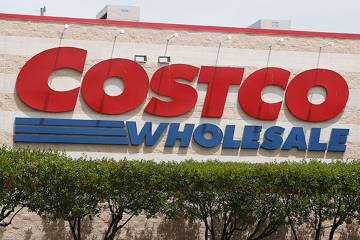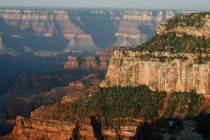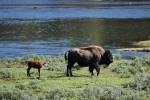Wildlife chief sought barbecue
Eleven out of 300 antelope accidentally died in an aerial net-gunning capture by Nevada biologists in Elko County this year, and state Wildlife Director Ken Mayer suggested using some of the meat for an upcoming barbecue for legislators and department staff.
A game warden questioned biologists Mike Cox and Russ Mason, who knew the antelope's hind quarter and backstrap meat were being taken to Reno in what the state's chief game warden, Rob Buonamici, described Monday as a questionable act.
"I'm not sure there's been an illegal act committed," Buonamici said.
To use the meat for a barbecue for staff and legislators would stray from accepted practice. Big game killed in state-sponsored trapping operations are turned over to people who rehabilitate wild animals, or the carcasses are left in remote areas for wildlife.
"For Joe Blow citizen, if one of them would have done that, I would have knocked on their door because it's property of the people of the state it belonged to. I would have just said, 'Hey, turn it over. We're going to dispose of it,'" Buonamici said.
As it turned out, one of the two biologists called a third biologist who had left the capture area with the meat and told him to get rid of it.
The meat was later dumped in a secluded area near Winnemucca, about a mile off Interstate 80. Mayer said it was left for scavengers such as coyotes, ravens and foxes.
Mayer, responding to a tip received by the Review-Journal, said he participated in the capture in January and, on the second day, a metal weight for a net that had been fired from a special rifle on board a helicopter struck an antelope and killed it.
Most of the other 10 animals were unfit for human consumption, including some that died in the release area, Mayer said, but he "just had a bright idea to try and find a better use" for the freshly killed pronghorn.
"Some of these legislators have no clue what wild game tastes like. I didn't give a direct order" to use the meat for a barbecue, Mayer, 55, said Monday from Phoenix where he is attending the annual North American Wildlife and Natural Resources Conference. "But as they (the biologists) thought through it, it was a reasonable thing to do."
Mayer said the capture was in an area ravaged by wildfires in order to keep the antelope herds from starving.
"It's a serious situation there for deer and antelope. The department's thought was that we should capture as many as 300 (antelope), which we did," he said.
Mayer previously worked for the California Department of Fish and Game and was appointed last year by Gov. Jim Gibbons to be Nevada's wildlife director.
Mayer said the captured antelope were hauled to two locations about a four-hour drive south and east of Elko where they were released.
Doug Nielsen, a Nevada Department of Wildlife spokesman in Las Vegas, issued a statement Monday citing NDOW veterinarian Mark Atkinson who said nationwide mortality of antelope from net-gunning operations has been 10 percent to 47 percent.
"NDOW strives for no more than 2 percent. In the Elko County operation we had a mortality rate of 5 percent. Although that is very low when compared to the historical figures, it is high by NDOW standards. We are evaluating the operation to see what can do differently and what we can do better," Nielsen said.
Nielsen, who is the Review-Journal's outdoor columnist, said big game trapping operations by state biologists require a permit for transporting live animals.
Mayer said he was puzzled about what should be done with the freshly killed antelope and asked whether arrangements had been made with a local American Indian tribe to give it to them.
Finding that was not the case, "I said, 'Well, in the future we need to find a better use.' In California, where I came from, the director had broader authority to utilize (the meat). Since we didn't have a tribe or rehabilitator lined up, I said we'll have a wildlife appreciation day. We're planning it for sometime in June," he said.
After the meat-harvesting incident, Buonamici said Mayer asked him to draw up a proposed regulation to cover that and similar situations involving the meat or carcasses of dead big game animals "to dispose of it in a fashion deemed appropriate by a director."
Gerry Lent, president of the Nevada Hunters Association, said he was aware of the incident but thought Mayer was hoping the meat could have been used for a good purpose.
"Surely there has to be a way the meat can be utilized. Hunters can't leave any edible portion in the field," Lent said. "From our standpoint, something needs to be done to prevent this. You can't waste meat. Hunters can't waste meat. Give it to the Salvation Army or feed the poor."
Contact reporter Keith Rogers at krogers@reviewjournal.com or (702) 383-0308.




























